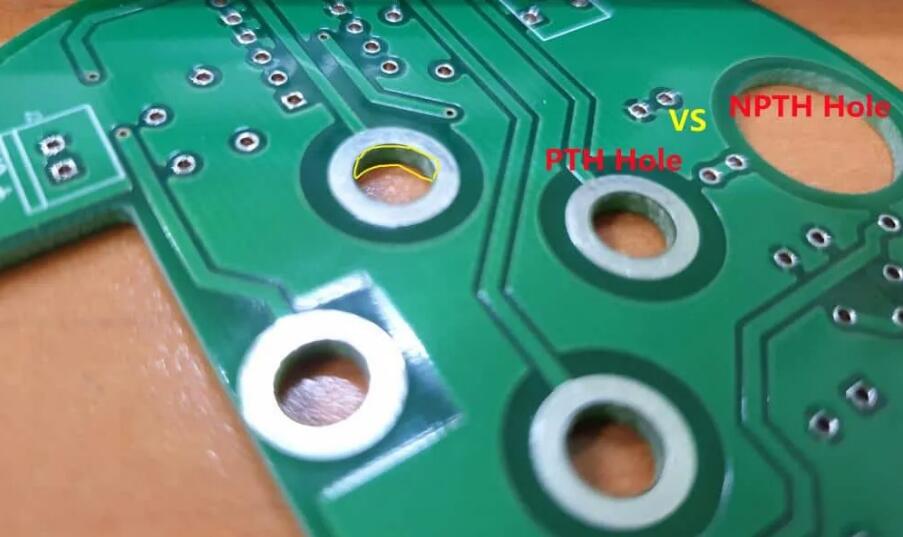What Does NPTH Mean in PCB?
When closely examining a PCB bare board, you will notice various holes distributed across the board. Some of these holes are through holes, while others are not. There may even be holes hidden within the board. The design of these holes is done to meet specific requirements. In this article, FS Technology will explore one of these types – NPTH. We will provide a conceptual introduction and discuss its pros and cons to help you gain a better understanding for your designs.
What Is NPTH in PCB
When manufacturing PCB, two types of holes are commonly used: PTH and NPTH. These holes serve different purposes and have distinct characteristics. PTH stands for Plated Through-Hole, and it’s used for component pin insertion and electrical connections. NPTH, on the other hand, stands for Non-Plated Through-Hole. These holes lack any plating and, as a result, have no electrical connections with other layers. NPTH primarily serves two functions:
Support and Reinforcement: PCB may include structural or non-electrical components in addition to electronic elements. NPTH can be used to support and reinforce these components without requiring electrical connections.
Heat Dissipation: Effective heat management is crucial in certain high-power applications. PCB generate heat during operation, and excessive heat can affect component or circuit performance. To enhance heat dissipation and reduce temperature, designers can leverage NPTH to improve thermal conductivity, ensuring the reliability and performance of electronic devices.

PTH AND NPTH
Key Points in Manufacturing NPTH
During the design phase, it is crucial to set the parameters for NPTH correctly. Firstly, the hole dimensions should match the component’s requirements, accommodating the pins while ensuring they are not too large, as this could compromise the mechanical strength of the PCB. Additionally, the number and placement of heat dissipation holes should be well-distributed. Having more holes does not necessarily guarantee better heat dissipation because, after a certain threshold, the effectiveness begins to diminish. It’s best to position heat dissipation holes around high-heat components to maximize their cooling effect.
Furthermore, the spacing between holes should be carefully considered. Increasing the spacing between holes can reduce crosstalk between adjacent traces but may lead to less dense component layouts and require a larger PCB area. This might not be advantageous in applications where miniaturization is a priority.
In the production phase, most NPTH holes on PCB are created using CNC machining, which involves changing the drill bits to achieve different hole sizes. However, this mechanical process can produce burrs. For complex PCB or cases requiring higher standards, laser equipment might be a better choice. Typically, critical quality control checks are conducted after drilling, including visual inspections to identify defects like cracks, voids, and damaged solder pads.
